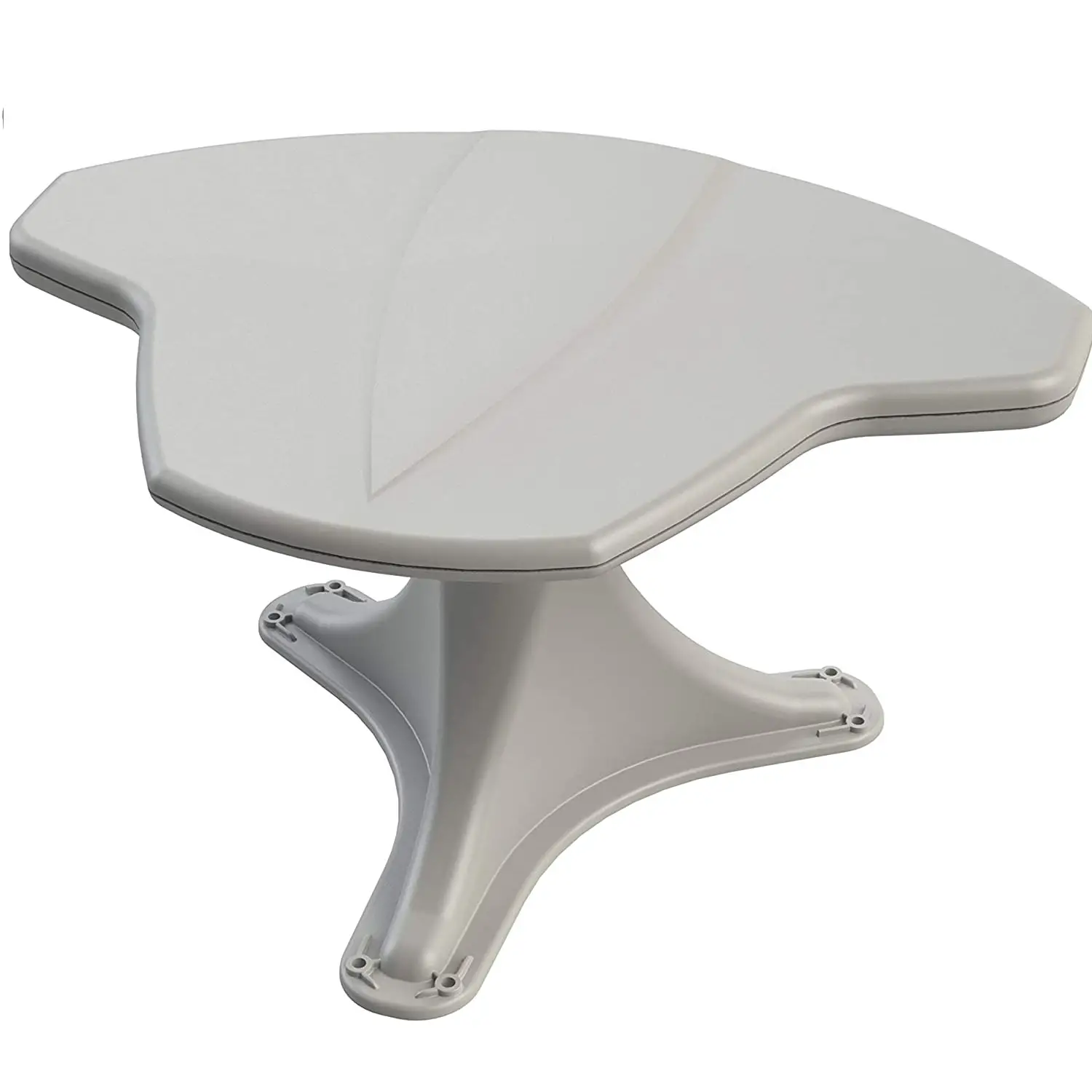
- Brand KING
- Color White
- Antenna Television
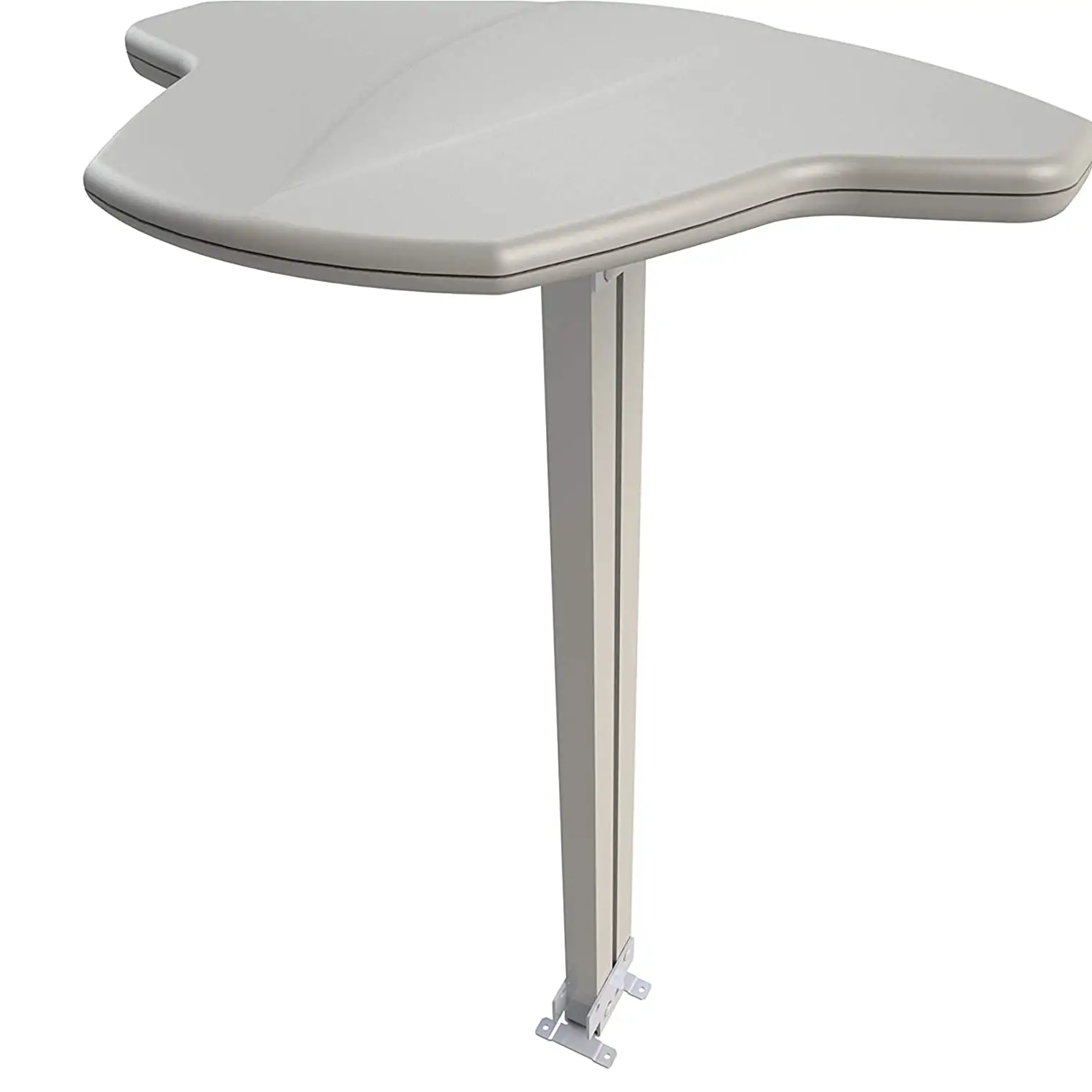
- Antenna Television
- Brand KING
- Color White
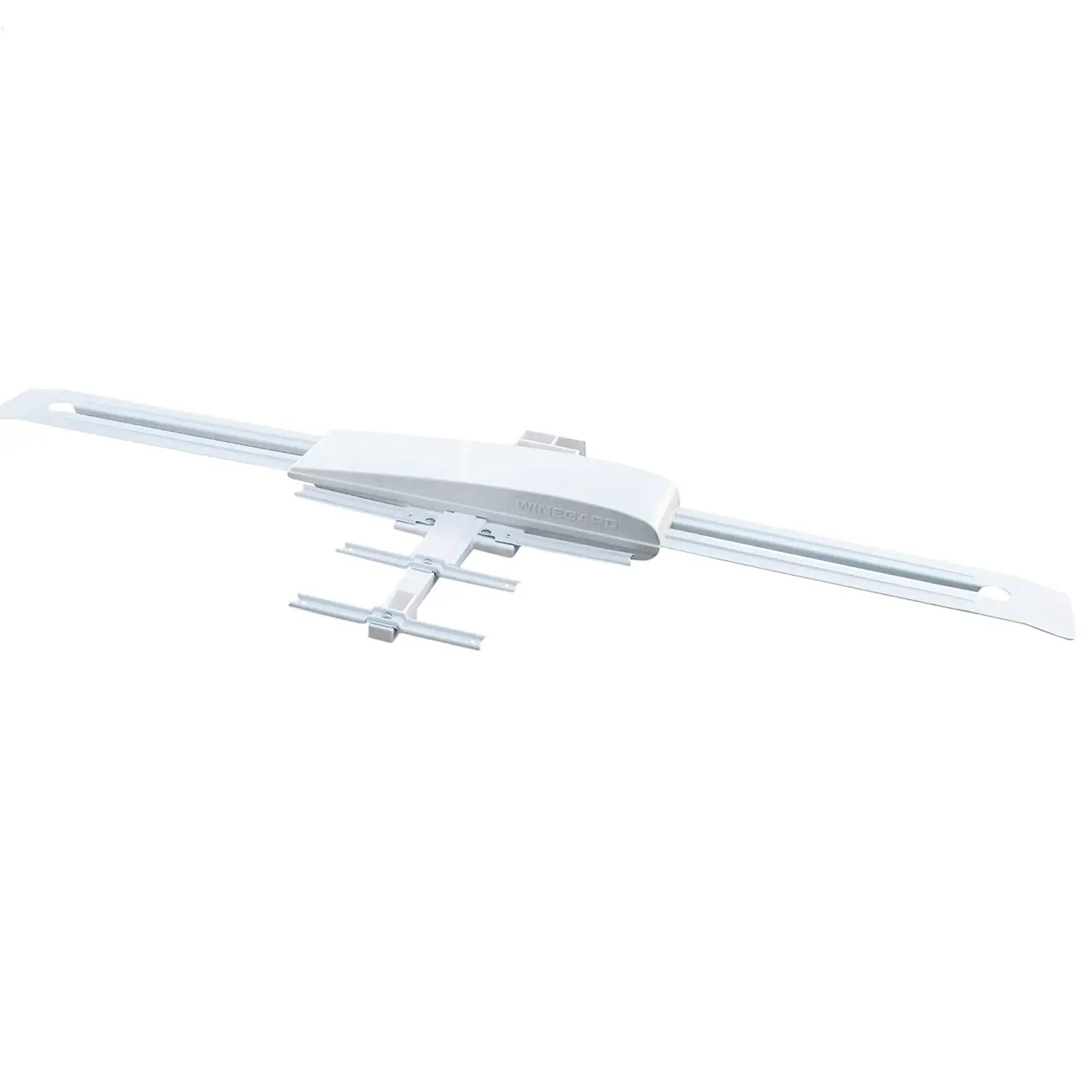
- Optimize your Sensar for Digital
- Repalcement head ONLY
- Color White
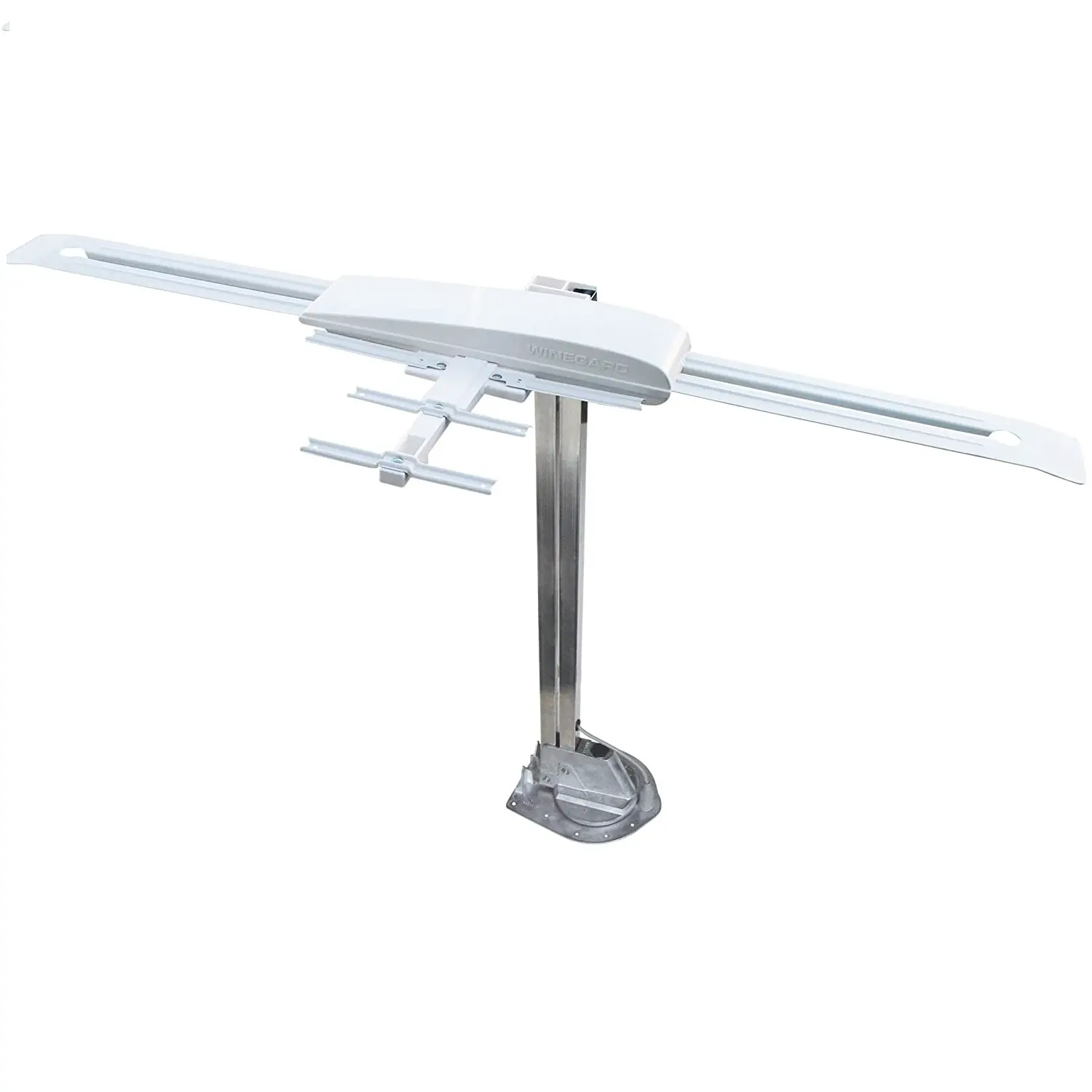
- Brand Winegard
- Color White
- Maximum Range 55 Miles
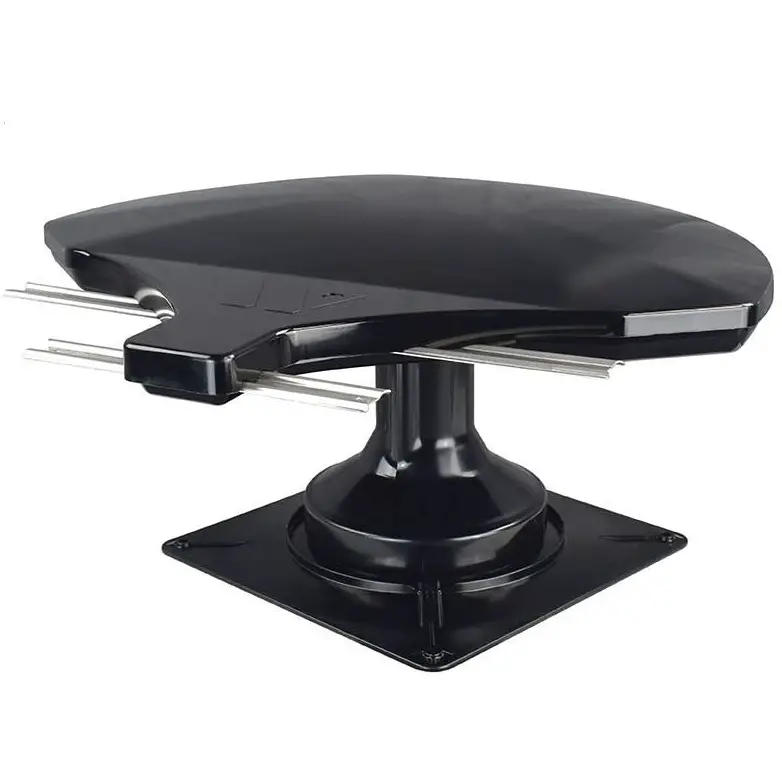
- Antenna Television
- Brand Winegard
- Color Black
Choose the Best RV Antenna
Customer’s Choice: the Best Rated RV Antennas
23 users answered this survey. Please help us improve this review!
RVing is one of the most popular means of vacationing in North America. And with good reason – it offers a great way to see some of the most beautiful scenery in the country while still having all the comforts of home. But if you’re like many RVers, you’ll want to stay connected to the internet and your favorite TV shows and movies while on the road. This guide will teach you everything you need to know about RV antennas so that you can make the best decision for your needs.
Table of Contents
KING Jack Directional Over-the-Air HDTV Antenna, White
 The KING Jack Over-the-Air HDTV Antenna is a powerful little antenna that provides long range signal acquisition, simple and fast point Giraldi direction finder for optimal reception.
The KING Jack Over-the-Air HDTV Antenna is a powerful little antenna that provides long range signal acquisition, simple and fast point Giraldi direction finder for optimal reception.
This easy to use device features an integrated SureLock locating system which ensures you’ll get your strongest television broadcast channels no matter where in the home they’re being transmitted from!
With its sleek, aerodynamic design and ability to receive both UHF signals from transmitters in addition to VHF broadcast channels this antenna will enhance your signal strength no matter where you are! Plus, the included shafts allow users of varying roof thicknesses so there’s never an issue finding something appropriate again.
This RV antenna is smaller than traditional RV antennas and comes with an interior enclosure that houses a rotation motor and a control board, making it the perfect RV antenna for any size rig.
KING OA8300 Jack HDTV Directional Over-the-Air Antenna, White
 Looking for a top-of-the-line HDTV antenna that will let you watch your favorite shows even when you’re on the road? The KING OA8300 Jack HDTV Directional Over-The-Air Antenna is your perfect solution.
Looking for a top-of-the-line HDTV antenna that will let you watch your favorite shows even when you’re on the road? The KING OA8300 Jack HDTV Directional Over-The-Air Antenna is your perfect solution.
This amplified, ultra-high gain antenna provides clear HDTV reception in travel trailers, campers, RVs, and motorhomes, so you can enjoy your favorite programming anywhere you go.
The long-range signal acquisition ensures that you’ll be able to get a clear picture even in remote areas, and the compact design means that it won’t take up too much space in your RV or camper.
Plus, this antenna is easy to install – no special tools required! Whether you’re a full-time RVer or just enjoy the occasional weekend getaway, the Directional Over-The-Air HDTV Antenna from KING is a must-have accessory.
Winegard RVW-205 Sensar IV Antenna with Wingman, White
 The Winegard RVW-205 Sensar IV Antenna with Wingman is a top of the line, amplified antenna that will provide you crystal clear reception for any channel no matter how hard it may be.
The Winegard RVW-205 Sensar IV Antenna with Wingman is a top of the line, amplified antenna that will provide you crystal clear reception for any channel no matter how hard it may be.
This antenna is perfect if your current one has lost its signal or just wasn’t cutting through enough to pick up those distant stations! Moreover, this device provides optimal performance thanks to its ability to pinpoint the exact angle for best reception.
With a maximum range of 88 km, it’s perfect for RVers who want to be able to enjoy their favorite digital HD channels no matter where they are. The powder-coated housing is designed for durability, and the antenna has passed rigorous UV and environmental testing to ensure years of trouble-free use. Plus, it’s easy to raise, lower, and rotate from inside your parked RV, so you can always get the best possible reception.
DTV/HD TV Antenna Winegard RVW-395 Sensar IV, White
 The Winegard RVW-395 Sensar IV is a top performer when it comes to HDTV and DTV antennas. It has a wide reception range of up to 88 kilometers and can pick up both SD and HD local channels flawlessly.
The Winegard RVW-395 Sensar IV is a top performer when it comes to HDTV and DTV antennas. It has a wide reception range of up to 88 kilometers and can pick up both SD and HD local channels flawlessly.
It’s easy to install, with the helpful printed documentation and low-profile design. Plus, it comes preinstalled on two coax cables for flexible placement options – no need to worry about obstructions or rust!
And this antenna is protected against tree branches/wires while traveling thanks to its handy protection case that’ll keep everything safe during transportations of any distance (even international)!
Winegard RZ-6035 Rayzar RV TV-Antenna, Black
 Introducing the Winegard RZ-6035 Rayzar RV TV Antenna! This directional amplified antenna is perfect for any RV and compliments every setup.
Introducing the Winegard RZ-6035 Rayzar RV TV Antenna! This directional amplified antenna is perfect for any RV and compliments every setup.
It utilizes your current wiring and power supply, so you don’t need to worry about extra cords or adapters. Moreover, it provides a high definition of VHF/UHF digital signals for an optimal viewing experience. The streamlined design with minimal footprint makes it easy to install, and the effortless rotation without cranking means you won’t have to strain yourself to get a great signal.
Plus, the durable housing with UV and weather resistance ensures your antenna will stand up to any conditions. And finally, the included antenna adapter allows you to easily connect your antenna to almost any RV.
Buyer’s Guide
What Is an RV Antenna Used For?
An RV Antenna is used to amplify the signal of a television broadcast so that it can be received by a TV set. It is also used to receive signals from satellites, which are then converted into a format that can be watched on a TV.
RV Antennas come in two main types: directional and omnidirectional. Directional antennas are designed to pick up signals from one specific direction, while omnidirectional antennas pick up signals from all directions.
There are a few things you need to take into consideration when choosing an RV antenna, such as the type of RV you have, where you will be using the RV, and what type of channels you want to be able to watch.
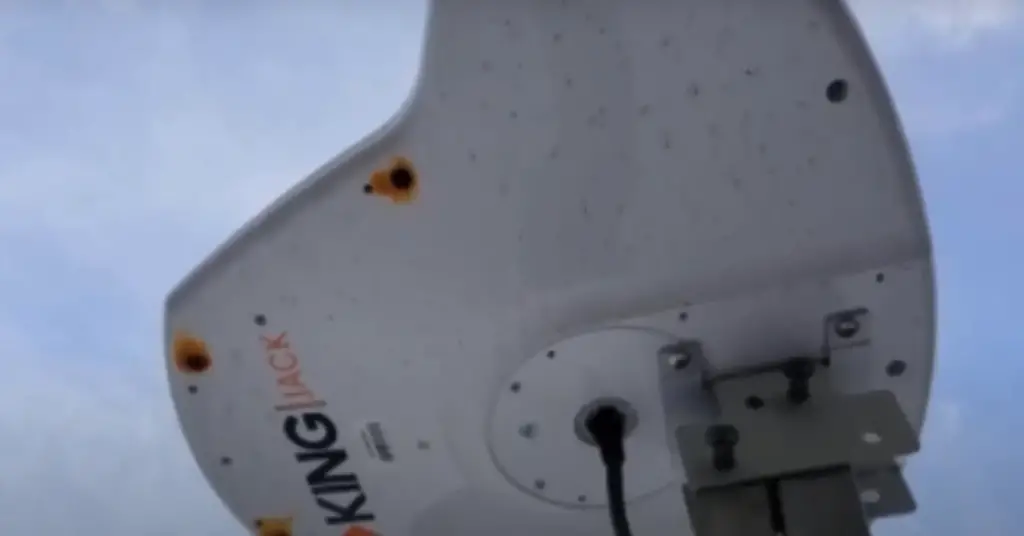
If you are not sure which type of antenna you need, there are a few things you can do to figure it out. The first step is to determine the range of the signal.
The next step is to find out what type of terrain will be between you and the broadcast towers. If there are hills or mountains in the way, you will need an antenna that is designed for that type of terrain.
You also need to consider the number of channels you want to be able to watch. If you only want a few basic channels, then an omnidirectional antenna should be sufficient [1].
Related Article: How to Attach a TV Mount to an RV Wall?
How does an RV TV Antenna work?
An RV TV Antenna is a device that helps you receive over-the-air television signals while you are on the road. These antennas are designed to be mounted on the roof of your RV and can be either manually or automatically operated.
The RV Antenna works by receiving the signal from the broadcast towers and then amplifying it so that it can be received by your television. Most RV Antennas will come with a built-in amplifier, which will help to boost the signal.
To use the RV Antennas correctly, you will need to point it in the direction of the broadcast towers. This can be done by using a compass or by using the signal strength meter on the antenna itself.
Once you have pointed the antenna in the correct direction, you will need to adjust the Gain control until you have found the optimal setting. The Gain control is used to amplify the signal and is usually located on the amplifier itself.
It is important to note that RV Antennas are not able to receive satellite signals. If you want to watch satellite television, you will need to use a separate dish that is specifically designed for this purpose.
Do RV Antennas Work for Digital TV?
The answer is a resounding YES! In most cases, you will get better reception with an RV antenna than you would with a standard home antenna. The reason for this is simple: RV antennas are designed to be more powerful and to pick up a wider range of frequencies.
The digital TV signals that are broadcast these days are very different from the old analog signals. They are more complex and they require more power to be received properly.
Analog TV signals were broadcast at a lower frequency than digital TV signals, so they didn’t need as much power to be received properly.
RV antennas are designed to receive both types of signals, so you will be able to get great reception with an RV antenna, regardless of whether you are watching digital or analog TV.
What’s the Typical Range for TV Antennas?
The average range for a TV antenna is about 56 km. If you live in a rural area, your range could be significantly higher. And if you live in a city, your range will be lower. The important thing to remember is that the range is affected by obstacles like trees and buildings.
The range of TV Antennas also depends on the type of antenna you have. Indoor antennas have a shorter range than outdoor antennas. And directional antennas have a longer range than omnidirectional antennas.
To get the most accurate estimate of your TV Antenna’s range, you should contact a professional installer. They will be able to give you a more accurate estimate based on your specific location and obstacles.
What Types of RV Antennas Are Out There?
Indoor Antennas
If you have ever been in an RV, you know that space is limited. That’s why many people opt for an indoor RV antenna. These antennas are small and can be placed almost anywhere in your RV.
The most effective indoor RV Antennas are the ones that are amplified. This means that they come with a built-in amplifier that will boost the signal. The downside to these antennas is that they can be a bit more expensive than the non-amplified versions.
This could be near a window or on top of a cabinet.
Outdoor Antennas
If you have the space, an outdoor RV antenna is a way to go. These antennas are larger and will give you a much better signal than an indoor antenna.
The downside to outdoor RV antennas is that they can be a pain to set up and to take down. If you are constantly on the move, this might not be the best option for you.
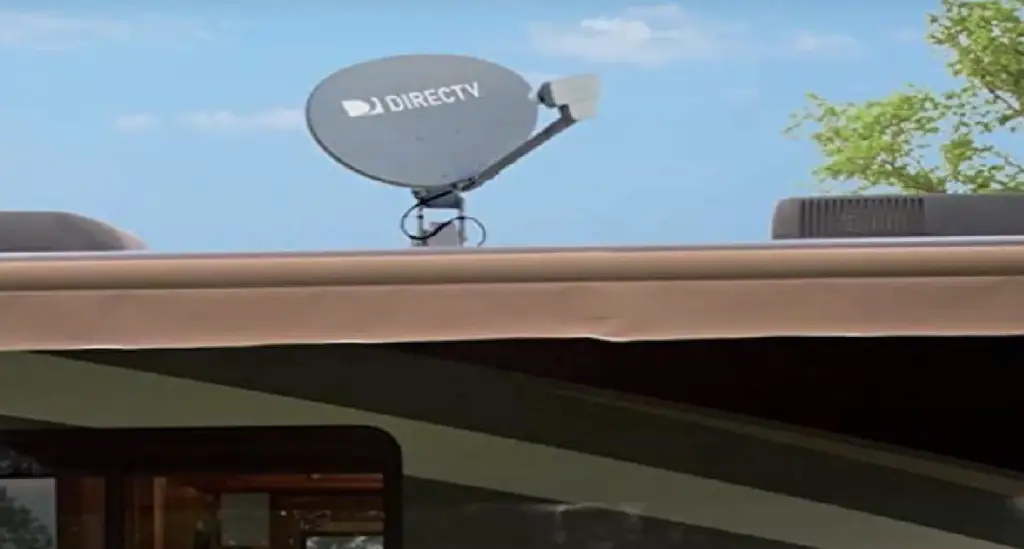
Another thing to consider with an outdoor RV antenna is the weather. If it is windy or raining, your signal could be affected.
There are a few different types of outdoor RV antennas:
Dome Antenna: This type of antenna is very popular among RVers. It is easy to set up and take down and can withstand bad weather fairly well. The downside to these antennas is that they can be a bit more expensive.
Winegard Antenna: This type of antenna is one of the most popular on the market. They are easy to set up and take down and have a very good reputation.
Yaesu Antenna: This type of antenna is less popular than the others but it is still a good option. It is easy to set up and take down, but it doesn’t have as good of a reputation in bad weather.
Satellite Television Antennas
If you want to be able to watch television in your RV, you will need a satellite TV antenna. These antennas are different from the ones that you would use for over-the-air television.
Satellite TV antennas are larger and require a clear view of the sky. This means that they need to be placed on the roof of your RV.
The upside to satellite TV antennas is that they give you a very clear picture. The downside is that they can be expensive and it can be hard to find a good place to put them.
Digital/VHF/UHF & HDTV Antennas
One of the most important things to consider when choosing an RV antenna is what type of television you have. If you have an HDTV, you will need a different antenna than if you have a standard definition TV.
HDTV antennas are the newest on the market and they are becoming more and more popular. These antennas give you a very clear picture and can pick up digital channels that a standard antenna cannot.
VHF/UHF & HDTV antennas can be either indoor or outdoor antennas. If you have an HDTV, we recommend that you get an outdoor antenna. This will give you the best possible signal.
Digital/VHF/UHF & HDTV antennas come in all shapes and sizes, so it is important to find one that will fit your RV [2].
What to Consider When Buying Antennas for RVs
Reception Strength and Signal Reception
If you are purchasing an antenna to bring in a specific channel or two, then you will want to focus on the reception strength. If, however, you are looking for an all-around great antenna that will give you access to as many channels as possible with the strongest signal quality, then you’ll want to focus on finding an antenna with good reception quality.
There are a few factors that affect both reception strength and quality. The height at which the antenna is installed will have the biggest impact on how well it performs. If possible, mount your RV antenna as high up on the roof of your rig as possible. This will help ensure that there are no obstructions between the satellite and your antenna. Another factor that can affect performance is the type of material your RV is made out of.
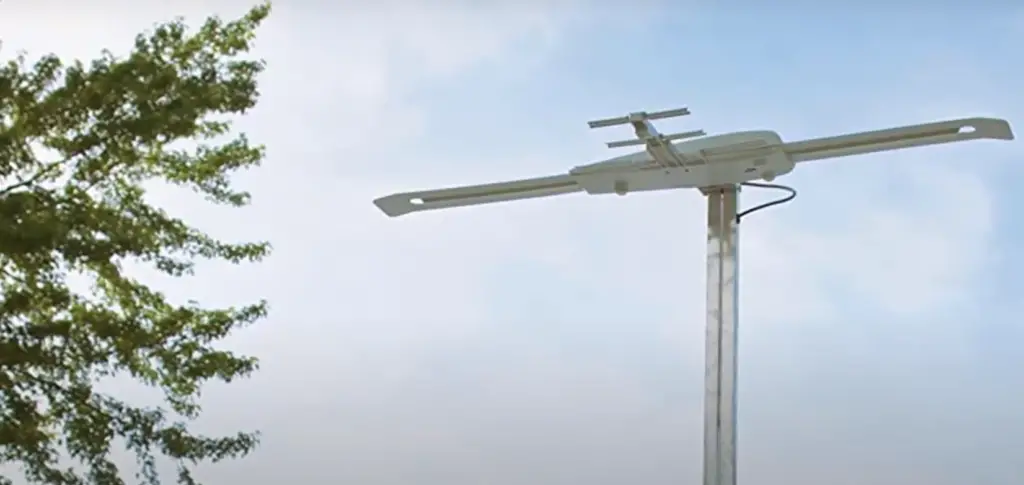
If you have a metal roof, for example, it can act as a shield and reflect the signal away from the antenna. In this case, you may want to consider an amplified antenna to help boost the signal. The location of the satellite you are trying to receive a signal from will also play a role in how well your antenna performs. If you are in a rural area, or if trees or mountains are blocking the path between your RV and the satellite, then you may need an amplified antenna as well.
Functionality and Ease of Use
The next thing you’ll want to consider when choosing an RV antenna is how easy it is to set up and use. If you are only going to be using your antenna occasionally, then you may not need one that is too complicated. On the other hand, if you plan on using your antenna regularly, or if you are traveling in an area where signal strength can be spotty, then you’ll want an antenna that is easy to adjust and fine-tune. Some antennas come with a built-in amplifier which can be a great feature to have.
Another thing to look for is an automatic pointing feature. This will help ensure that your antenna is always pointed in the right direction, which can save you a lot of time and frustration.
Finally, you’ll want to make sure that the antenna you choose is compatible with your RV’s existing TV setup. If you have a satellite dish, for example, then you’ll need an antenna that is specifically designed to work with it.
Keep all of these factors in mind as you shop for an RV antenna and you’ll be sure to find one that meets all of your needs.
Size
The size of the antenna is another important consideration. If you are only going to be using your RV antenna occasionally, then you may not need one that is too large or bulky. On the other hand, if you plan on using your antenna regularly, or if you are traveling in an area where signal strength can be spotty, then you’ll want an antenna that is easy to adjust and fine-tune. Some antennas come with a built-in amplifier which can be a great feature to have.
The average size of the small RV Antennas is about 45 cm.
The size of the large RV Antennas is about 90 cm.You can also find portable RV antennas that are much smaller and can be easily stored when not in use. These are great for RVs that are only used occasionally or for those who want to be able to take their antenna with them when they travel.
Wi-Fi Capability
Another feature that you may want to look for in an RV antenna is Wi-Fi capability. This can be a great option if you want to be able to connect to the internet while you are on the road. There are a few different ways that you can get Wi-Fi in your RV, but using an antenna is one of the most popular options.
If you choose an antenna with Wi-Fi capability, then you’ll need to make sure that it is compatible with your RV’s existing TV setup. If you have a satellite dish, for example, then you’ll need an antenna that is specifically designed to work with it.
Weight
The weight of the RV Antennas is another important feature to consider. This feature is important because the weight will determine how easy it is to install the antenna.
The average weight of the small RV Antennas is about 5 kg. If you have a larger RV, then you may need an antenna that is specifically designed for it. The average weight of the large RV Antennas is about 11 kg.Most RV Antennas have a weight limit of 22 kg. Some antennas have a higher weight limit, but these are typically the ones that are specifically designed for larger RVs.
Mounting Location
Mounting an antenna can be a tricky business. If you only plan on using your RVs once in a while, then maybe go with something simple like a model which just slots into place and doesn’t require much maintenance or tuning work!
But if it’s going to stay fixed onto the roof of your motorhome (for example), you will likely want more than just slip-in installation options – especially when traveling through areas where reception might not always seem strong enough at times so there would definitely need some fine Tuning abilities built right into the antenna.
Some antennas come with a built-in amplifier which can be a great feature to have. Another thing to look for is an automatic pointing feature. This will help ensure that your antenna is always pointed in the right direction, which can save you a lot of time and frustration.
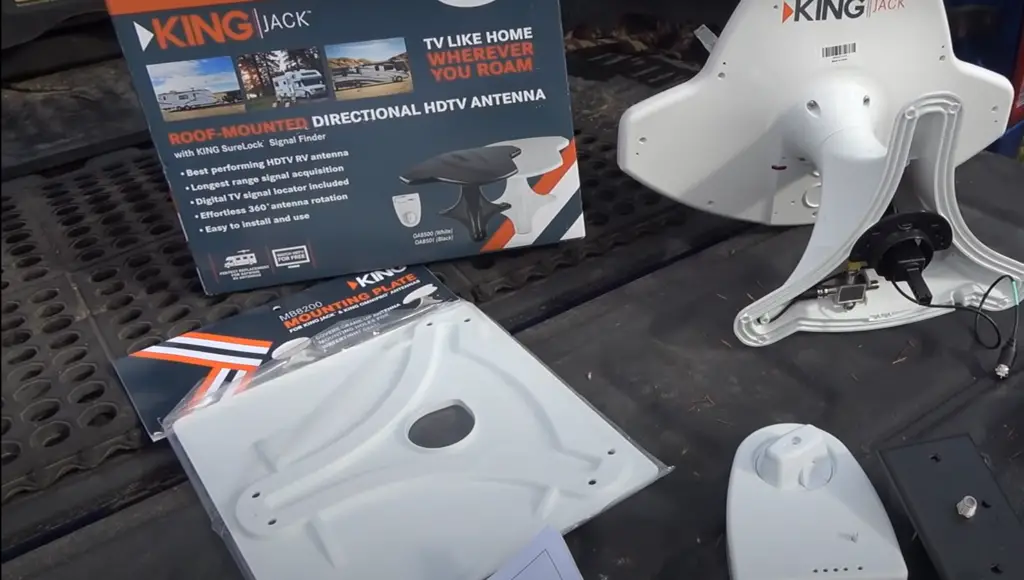
Among popular mounting locations, the most common are:
- on the roof of the RV
- on a ladder
- on a pole
- inside the RV.
Monopoles are the simplest and least expensive type of antenna to install.
If you are only going to be using your antenna occasionally, then this may be all that you need.There are also more complex antennas that can be mounted on poles or inside your RV. These antennas typically have a longer range and can pick up signals from further away. However, they are also more expensive and can be more difficult to install.
Material And Durability
The material and durability of the RV Antennas is another important feature to consider. This feature is important because the antenna will be exposed to the elements when you are using it. You want to make sure that the antenna is made from a durable material that can withstand the wind, rain, and sun.
There are a few different materials that RV antennas are made from, but the most common is aluminum. Aluminum is lightweight and strong, which makes it a great choice for an RV antenna.
Another popular choice for an RV antenna is fiberglass.
This can be a great option if you plan on traveling through areas with high winds.The last type of material that RV antennas are made from is plastic. Plastic is the least durable option, but it is also the least expensive. If you are only going to be using your antenna occasionally, then this may be all that you need.
No matter what type of material you choose, make sure that it is rated for outdoor use. This will ensure that it can withstand the elements and will last for years to come [3].
Cost And Warranty
The cost of the RV Antennas is an important consideration. You want to make sure that you get an antenna that fits within your budget. The good news is that there are a wide variety of antennas available, so you should be able to find one that fits your needs and budget. The price of an antenna can range from a few dollars to several hundred dollars.
Another important consideration is the warranty. Most RV antennas come with a one-year warranty. This means that if something goes wrong with the antenna, you can return it for a replacement or a refund.
The warranty covers the cost of the antenna and the shipping. It does not cover the cost of installation or any other fees.
Comparison of RV Antenna Indicators
When choosing an RV antenna, it is essential to consider various indicators to ensure optimal reception and performance. The following table presents a comparison of these indicators to assist in making an informed decision:
| Indicator | Description |
|---|---|
| Frequency Range | The range of frequencies the antenna can receive. A broader frequency range allows for more channels and better reception. |
| Gain | The measure of an antenna’s ability to amplify incoming signals. Higher gain results in improved signal strength and reception. |
| Directionality | Refers to the antenna’s ability to focus on signals from a specific direction. Omnidirectional antennas receive signals from all directions, while directional antennas focus on signals from a specific direction, offering higher reception strength. |
| Installation Type | Indicates whether the antenna requires permanent roof mounting, temporary setup, or is built into the RV. Consider your preferences and limitations for installation. |
| Amplification Method | Specifies whether the antenna uses an internal amplifier or requires an external amplifier for signal enhancement. Internal amplification simplifies the setup process. |
| Size and Weight | The physical dimensions and weight of the antenna. Ensure it is suitable for your RV’s roof space and weight limitations. |
| Price | The cost of the antenna, which may vary based on the brand, features, and quality. Consider your budget while ensuring the chosen antenna meets your requirements. |
This table provides a comprehensive overview of the essential indicators to consider when choosing an RV antenna. Evaluating these factors will help you make an informed decision based on your specific needs and preferences.
FAQ
What RV antenna has the longest range?
It’s important to keep in mind that the range of any antenna will vary based on several factors, including terrain, obstacles, and weather conditions. Even the best RV antenna won’t work well if trees or hills are blocking the line of sight to the nearest tower.
The Winegard ConnecT is one of the most popular RV antennas on the market and for good reason. It offers a very long range, up to 80 km in ideal conditions.
Another popular option is the KING Jack Antenna, which also has a very long range (up to 70 km).
However, if you are looking for an RV antenna with the absolute longest range possible, then you’ll want to check out the Channel Master CM-3020. This antenna has a range of up to 240 km!
Do RV antennas work?
Yes, RV antennas do work and can be a great addition to your RV. However, it’s important to keep in mind that the range of any antenna will vary based on several factors, including terrain, obstacles, and weather conditions.
Even the best RV antenna won’t work well if trees or hills are blocking the line of sight to the nearest tower. Therefore, it’s always a good idea to have a backup plan for getting your TV signal (like using an RV satellite dish).
What is the best antenna to get more channels?
There are a few different factors that you’ll want to consider when choosing an antenna to get more channels.
First, you’ll need to decide what type of channels you want to receive. If you’re just looking for the major networks (like ABC, CBS, NBC, FOX, etc.), then any good quality indoor or outdoor TV antenna should do the trick.
However, if you’re looking for more specialized channels (like PBS or The CW), then you may need a more powerful antenna with a longer range.
The next factor to consider is your location. If you live in a rural area, then you’ll likely need an outdoor antenna with a very long range to pick up signals from distant towers.
How can I boost my RV antenna?
There are a few different ways that you can boost your RV antenna. One way is to use a signal amplifier. A signal amplifier will amplify the signal coming from the antenna, which can help to improve reception in areas with weak signals.
Another way to boost your RV antenna is to add a second antenna. This will give you the benefit of having two antennas (which can help to increase the range and improve reception), but it will also require you to have two TV receivers.
Finally, you could also try moving your RV closer to the nearest TV tower. This may not always be possible, but it’s worth a try if you’re having difficulty getting a good signal.
How do you use an RV antenna?
Using an RV antenna is relatively simple. First, you’ll need to choose an appropriate location for your antenna. If you’re using an outdoor antenna, then you’ll want to mount it as high up as possible on your RV (preferably on the roof).
If you’re using an indoor antenna, then you’ll want to place it in a location where it will have the best line of sight to the nearest TV tower.
Once you’ve chosen a location, simply connect your antenna to your TV receiver and run a channel scan. This will allow your TV to find all of the available channels in your area.
How do you get better reception on a camper antenna?
There are a few things that you can do to help improve the reception of your camper antenna. First, try moving your antenna to a different location on your RV.
Sometimes, simply moving the antenna a few inches can make a big difference. If you’re using an outdoor antenna, then you may also want to try raising or lowering it to see if that helps (just be careful not to damage your RV in the process).
Another thing that you can do is use a signal amplifier. A signal amplifier will amplify the signal coming from the antenna, which can help to improve reception in areas with weak signals.
Finally, you could also try moving your RV closer to the nearest TV tower. This may not always be possible, but it’s worth a try if you’re having difficulty getting a good signal.
How to Use a TV Antenna for Recreational Vehicles?
Using a TV antenna for recreational vehicles is a great way to save money on your entertainment while on the road. With an RV antenna, you can pick up local channels for free, which will give you access to news, weather, and another programming.
To use an RV antenna, you’ll first need to choose an appropriate location for it. If you’re using an outdoor antenna, then you’ll want to mount it as high up as possible on your RV (preferably on the roof).
If you’re using an indoor antenna, then you’ll want to place it in a location where it will have the best line of sight to the nearest TV tower.
How to Change an RV TV Antenna?
If you’re not happy with the performance of your RV TV antenna, then it may be time for a change. The first thing that you’ll need to do is choose a new antenna.
When choosing an RV TV antenna, there are a few things that you’ll need to keep in mind. First, consider the type of channels that you want to watch. If you’re looking for basic channels like ABC, CBS, NBC, and FOX, then a good quality indoor or outdoor TV antenna should do the trick.
However, if you’re looking for more specialized channels (like PBS or The CW), then you may need a more powerful antenna with a longer range.
Is an RV Antenna Considered Free TV or Subscription?
An RV antenna is considered free TV because it allows you to access local channels for free. With an RV antenna, you can pick up local channels for news, weather, and other programming. You will not need a subscription to use an RV antenna.
There are a few things that you’ll need to keep in mind when using an RV antenna. First, you’ll need to choose an appropriate location for your antenna. If you’re using an outdoor antenna, then you’ll want to mount it as high up as possible on your RV (preferably on the roof).
Can I Watch TV While Driving?
Yes, you can watch TV while driving with an RV antenna. However, there are a few things that you’ll need to keep in mind. First, you’ll need to choose an appropriate location for your antenna.
Mounting an antenna high on the roof of your RV is ideal. For it to work best, though, you’ll want a location where there’s plenty of room and line-of-sight from any nearby TV towers or other sources such as cell phones that may interfere with signal reception in some way (elevated locations usually provide better first pictures).
How to Repair and Maintain an Antenna for RVs?
It’s important to keep your RV antenna in good working condition. With proper care and maintenance, your antenna should last for many years.
One of the best ways to keep your RV antenna in good working condition is to regularly clean it. If you live in an area with a lot of dust or pollen, then you’ll want to clean your antenna more often.
You can use a soft cloth to wipe down the surface of your antenna. Be sure to avoid using any harsh chemicals or abrasive materials, as these can damage the surface of your antenna.
If you notice that your RV antenna isn’t performing as well as it used to, then there are a few things that you can do to try and improve its performance.
How to Direct a Television Antenna for RVs?
There are a few things that you’ll need to keep in mind when directing your RV TV antenna. First, you’ll need to choose an appropriate location for your antenna. If you’re using an outdoor antenna, then you’ll want to mount it as high up as possible on your RV (preferably on the roof).
Are RV antennas compatible with digital signals?
Yes, RV antennas are compatible with digital signals. Many modern RV antennas are designed to receive both analog and digital signals, allowing you to enjoy a wide range of channels on your TV.
Can I use my RV antenna to receive satellite signals?
No, RV antennas are not designed to receive satellite signals. They are typically designed to receive over-the-air broadcast signals from local TV stations. If you want to receive satellite signals, you will need a separate satellite dish system.
How do I know if my RV antenna is amplified?
Amplified RV antennas usually have a power supply unit that connects to the antenna itself. You can check if your RV antenna is amplified by looking for a power switch or a separate power cable connected to the antenna. Additionally, amplified antennas often have a built-in signal amplifier to enhance the reception.
Can I use an RV antenna for FM radio reception?
Yes, some RV antennas are designed to receive FM radio signals as well. These antennas often have a dedicated port or a switch to select between TV and FM radio reception. If you enjoy listening to FM radio while on the road, look for an RV antenna that supports FM radio reception.
How do I aim my RV antenna for optimal signal reception?
To aim your RV antenna for optimal signal reception, you can follow these steps:
- Extend and raise the antenna to its full height.
- Rotate the antenna slowly in different directions.
- Scan for TV channels on your TV or use a signal strength meter.
- Adjust the antenna direction based on the signal strength.
Keep repeating these steps until you find the best position for maximum signal reception.
Are there RV antennas specifically designed for recreational vehicles?
Yes, there are RV antennas specifically designed for recreational vehicles. These antennas are usually compact, lightweight, and feature a low-profile design to minimize wind resistance while traveling. They are also engineered to withstand the rigors of outdoor use and offer good signal reception in various locations.
Can I install multiple RV antennas on my recreational vehicle?
Yes, you can install multiple RV antennas on your recreational vehicle, depending on your needs. For example, you might install a TV antenna for over-the-air broadcast reception and a separate satellite dish for satellite TV. Just ensure that the antennas are properly installed and do not interfere with each other.
8. How do I maintain and clean my RV antenna?
To maintain and clean your RV antenna, you can follow these tips:
- Inspect the antenna regularly for any signs of damage or wear.
- Clean the antenna periodically using a mild soap and water solution.
- Remove any debris or bird droppings from the antenna.
- Ensure that the antenna connections are secure.
- Consider lubricating any moving parts of the antenna mechanism as recommended by the manufacturer.
Proper maintenance and cleaning will help ensure optimal performance and longevity of your RV antenna.
Useful Video: Top 5 Best RV TV Antenna Review
Conclusion
The RV Antennas are a great addition to any RV and can provide you with many hours of enjoyment. By following the tips in this guide, you will be able to choose and use the best RV Antennas for your needs. You will also be able to enjoy the benefits of having an RV Antenna without having to worry about the hassles that come with them.
References:
- https://www.outdoorsy.com/blog/rv-antenna
- https://www.thedrive.com/reviews/28243/best-rv-antennas
- https://rvshare.com/blog/rv-antenna/

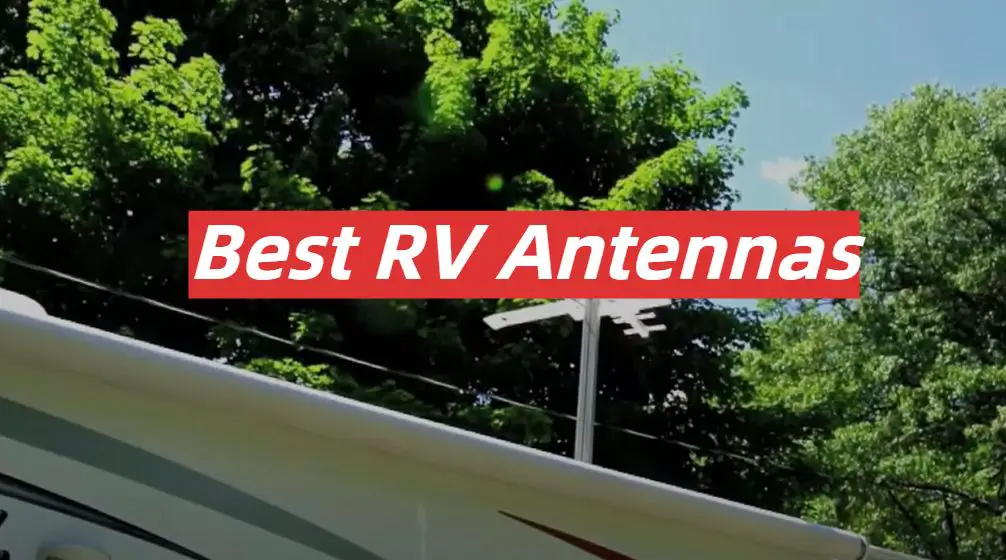

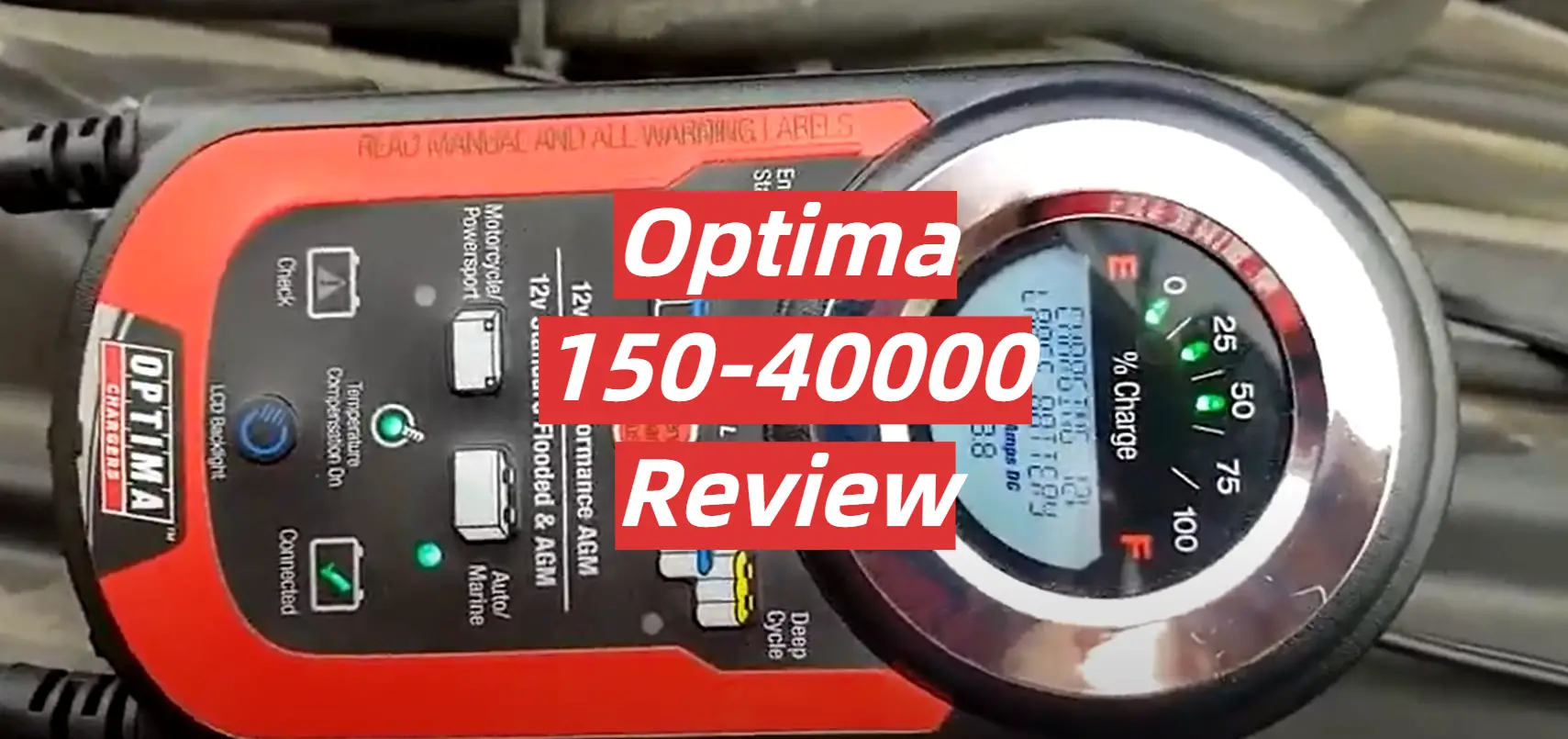


Leave a Reply